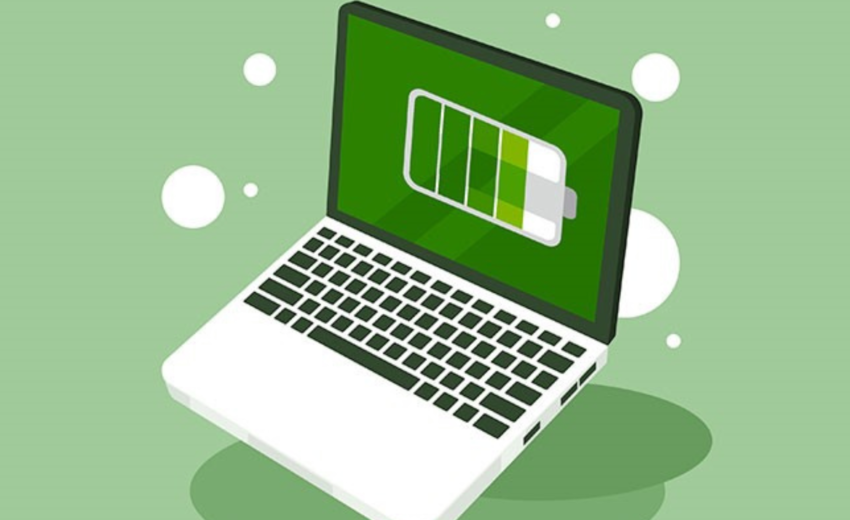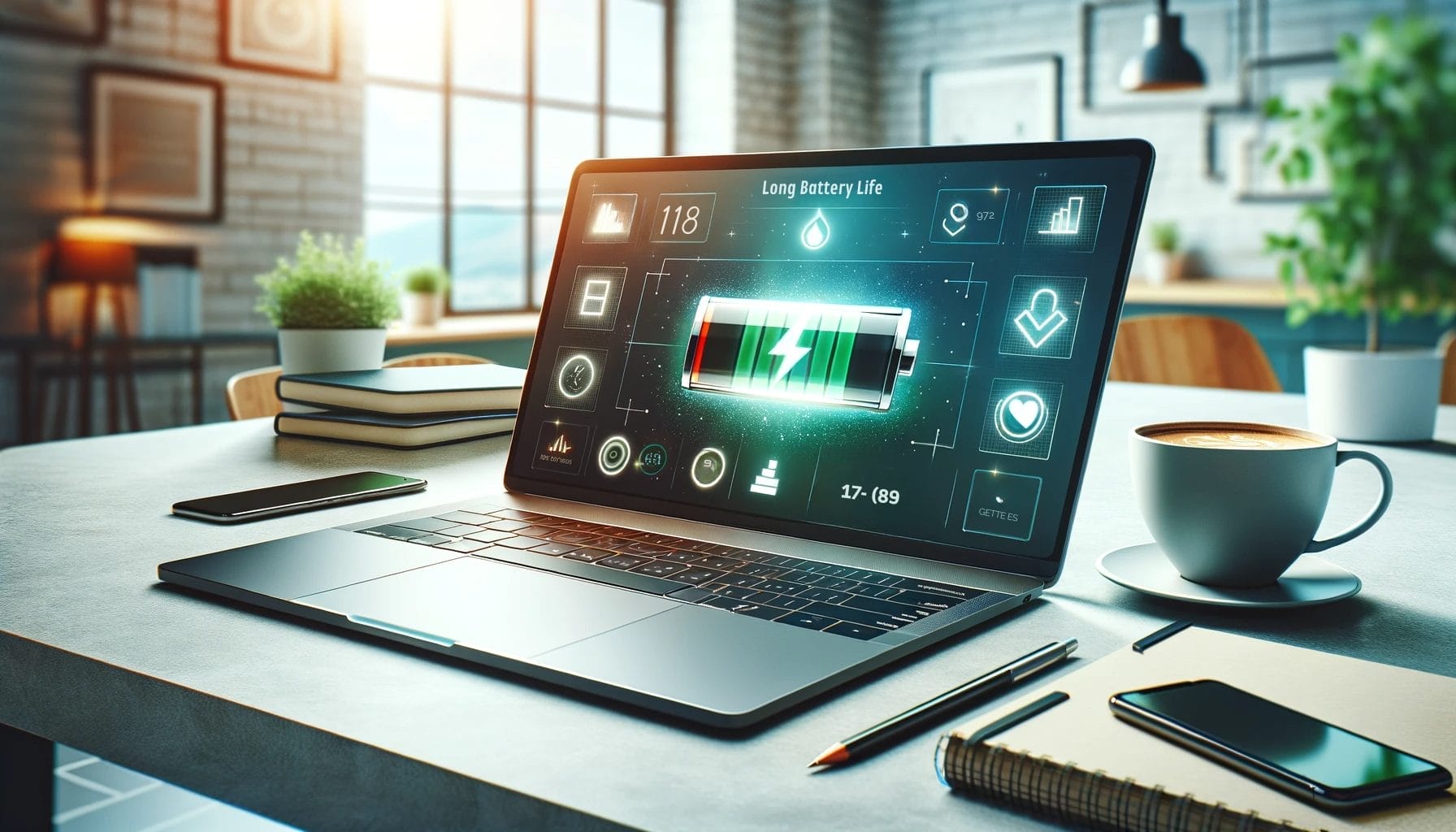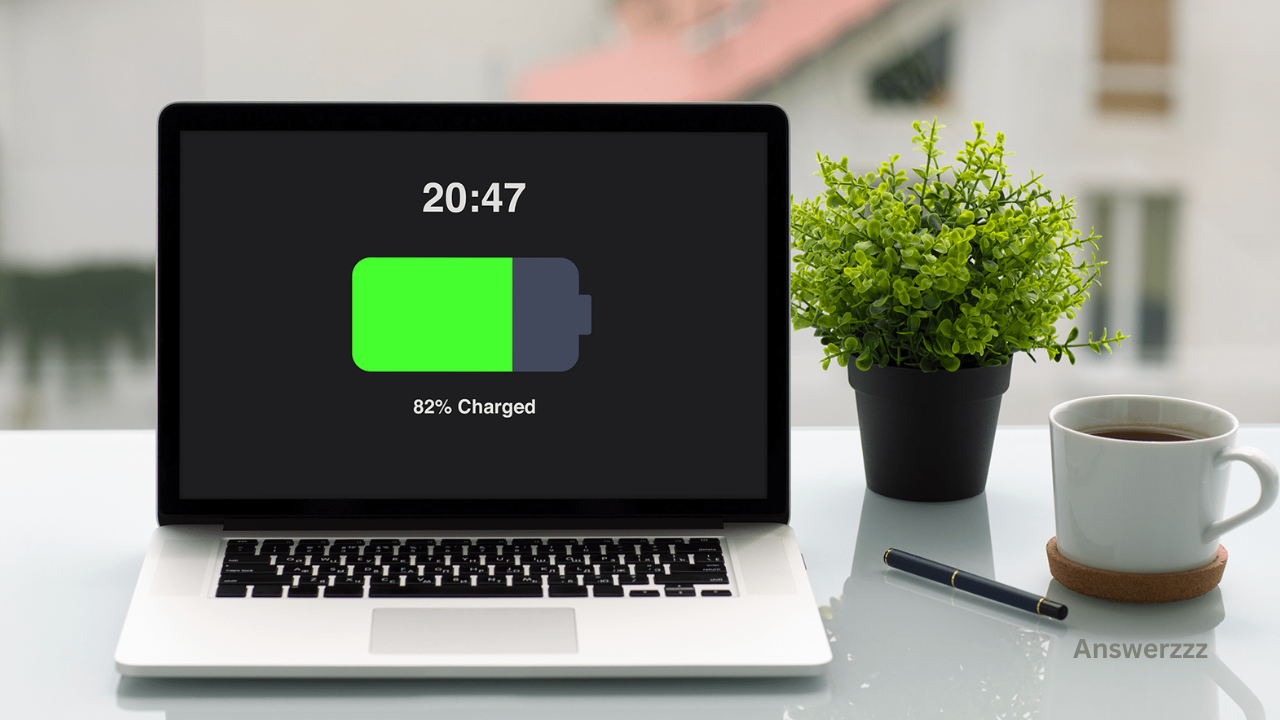In today’s fast-paced digital world, a reliable laptop is essential for work, school, entertainment, and everything in between. One of the most important aspects of laptop use is battery life. No one enjoys the frustration of their laptop dying mid-task, especially when you’re on the go. Fortunately, there are a variety of effective strategies you can implement to extend your laptop’s battery life and ensure that it keeps running smoothly throughout the day. By understanding how your laptop’s battery works and adopting some simple habits, you can significantly maximize its longevity.
1. Understanding Battery Life vs. Battery Longevity

Before diving into the tips for improving battery life, it’s important to distinguish between battery life and battery longevity. Battery life refers to how long a laptop lasts between charges, while battery longevity refers to how long the battery lasts before it starts to degrade and can no longer hold a full charge. Maximizing battery life involves adjusting settings and habits to get the most out of each charge, whereas improving longevity is more about preserving the overall health of the battery over time.
2. Adjust Screen Brightness
One of the quickest and easiest ways to save battery power is by adjusting the screen brightness. Your laptop’s display can consume a significant amount of power, especially when set at full brightness. Reducing the brightness by just a few notches can dramatically extend your battery life. Most modern laptops allow you to adjust the brightness using function keys or through the display settings. For optimal battery performance, keep your screen brightness at a level that’s comfortable but not excessively high.
How to Improve Your Wi-Fi Signal: 7 Easy Tips for Faster Internet
Additionally, many laptops come with an automatic brightness adjustment feature that can increase or decrease brightness based on ambient lighting. You may want to disable this feature if you prefer manual control over the brightness level or if you’re in an environment where the lighting doesn’t fluctuate much.
3. Use Power Saving Modes
Laptops typically come with built-in power saving modes, such as “Power Saver” or “Battery Saver,” which adjust the system’s performance to extend battery life. These modes automatically adjust various settings like screen brightness, background processes, and the performance of the processor to reduce power consumption. Enabling these modes is a simple and effective way to get more juice out of your battery when you need it.
For Windows laptops, the Battery Saver mode can be activated by going into the battery settings or clicking on the battery icon in the taskbar. On macOS, you can enable Low Power Mode under the Energy Saver preferences to conserve energy and prolong battery life.
4. Disable Unnecessary Background Processes
Many applications run in the background, even when you’re not actively using them. These background processes can drain your laptop’s battery without you even realizing it. Checking your task manager (Windows) or Activity Monitor (Mac) can help identify resource-hogging apps that are unnecessarily running in the background.

On Windows, you can go to the Task Manager by pressing Ctrl+Shift+Esc, and on Mac, open Activity Monitor. Look for any applications that are using an unusually high amount of CPU or memory and close them if they’re not essential. This will free up resources and reduce battery consumption.
Additionally, disabling automatic updates and background syncing for apps like email, cloud services, and social media can help reduce energy usage. While it’s important to keep your software up to date, you can schedule these updates to happen when you’re plugged into a power source instead of during battery mode.
5. Turn Off Wi-Fi and Bluetooth When Not in Use
Wi-Fi and Bluetooth can be significant energy drainers when active, even if you’re not using them. If you’re working offline or simply not using these features, it’s best to turn them off. Disabling Wi-Fi and Bluetooth can prevent your laptop from constantly searching for networks or devices to connect to, which can save power.
On both Windows and macOS, you can easily turn off Wi-Fi and Bluetooth from the taskbar or menu bar, respectively. Alternatively, some laptops may have a physical switch to disable wireless connections, providing another convenient option.
6. Optimize Your Laptop’s Power Settings
Modern laptops come with customizable power settings that allow you to tailor power consumption based on your usage patterns. On Windows, these settings can be accessed through the Power & Sleep options in the control panel. On a Mac, you can find these settings in System Preferences under Energy Saver.
By adjusting your laptop’s power settings, you can set your device to enter sleep mode faster when inactive, disable certain hardware components when not needed, and adjust how long your laptop stays awake while on battery power. Fine-tuning these settings to your preferences can help balance battery performance with productivity.
7. Close Unnecessary Tabs and Programs
If you tend to keep multiple browser tabs and applications open, it’s time to rethink this multitasking habit. Each open tab or application uses system resources that drain your battery. Even if a tab is not actively in use, it may still be running scripts or syncing data that requires processing power.
Take a moment to close any unnecessary tabs, especially resource-heavy ones like video streaming sites, online games, or social media platforms. If you need to keep a lot of tabs open, consider using a browser extension like One Tab or Session Buddy to save all open tabs for later without leaving them running.
8. Upgrade to an SSD (Solid State Drive)
If your laptop is still using a traditional hard disk drive (HDD), upgrading to a solid-state drive (SSD) can significantly improve both performance and battery life. SSDs are much more energy-efficient than HDDs and can reduce the overall power consumption of your laptop. SSDs also speed up the boot process and increase the responsiveness of your system, which can result in less energy spent on processing tasks.
Although upgrading to an SSD may require a financial investment, it is one of the most effective ways to optimize your laptop’s battery life in the long run. Additionally, if you’re using your laptop for tasks that involve frequent data access, such as video editing or gaming, an SSD will provide an extra performance boost.
9. Keep Your Laptop Cool

Overheating can cause your laptop’s battery to degrade faster and shorten its overall lifespan. To ensure optimal battery performance, it’s important to keep your laptop cool. Make sure you’re using your laptop on a flat, hard surface that allows for proper airflow. Avoid using your laptop on soft surfaces like beds or couches, as this can block air vents and cause the internal temperature to rise.
Consider investing in a cooling pad if you often use your laptop for demanding tasks. These cooling pads have built-in fans that help regulate the temperature, preventing your laptop from overheating.
10. Unplug When Fully Charged
Leaving your laptop plugged in once it reaches 100% can contribute to unnecessary strain on the battery, which can shorten its lifespan. Most modern laptops are designed to stop charging once they’re fully charged, but it’s still a good habit to unplug your laptop once it hits 100% to preserve the battery’s overall health.
If you need to keep your laptop plugged in for extended periods, some laptops offer a feature that limits charging to 80% to avoid keeping the battery at full charge for too long. This feature can often be enabled in the BIOS or through the laptop’s battery management settings.
Snapchat Filters and Lenses: How to Create Stunning Content Like a Pro
11. Perform Regular Battery Calibration
Battery calibration helps your laptop’s operating system accurately gauge the remaining battery power, which can result in more reliable battery readings. To calibrate your battery, allow it to fully charge to 100%, then let it discharge to around 5-10%. Afterwards, recharge it back to 100%. Performing this process every couple of months can help your laptop track battery usage more accurately and avoid sudden drops in battery life.
12. Consider External Battery Packs
If you find yourself needing extra power during long travel days or while working away from an outlet, investing in an external battery pack is a smart solution. These portable chargers can easily be connected to your laptop via USB or a dedicated charging port to give you extra hours of usage.
Many external battery packs are compact and lightweight, making them ideal for people who frequently work on the go. Just make sure to choose one that is compatible with your laptop’s charging requirements and offers a high capacity for extended power.
13. Keep Your Software Up to Date
Outdated software can lead to inefficient performance, which can drain your battery faster. Software updates often include bug fixes and optimizations that can improve system performance, including power management. Make sure your operating system, drivers, and applications are up to date to ensure the best battery efficiency.
Most laptops will notify you when updates are available, but it’s a good idea to manually check for updates regularly. This will ensure that your laptop runs smoothly and efficiently, reducing unnecessary battery drain.
14. Consider Battery Replacement When Necessary
Over time, laptop batteries will naturally degrade, and their ability to hold a charge will diminish. If you’ve had your laptop for several years and notice a significant decline in battery life, it might be time for a battery replacement. Most laptop manufacturers offer replacement batteries, and this can breathe new life into your device by restoring its battery performance.
![]()
Before deciding on a replacement, check your laptop’s warranty and service options. Some companies offer free or discounted battery replacements if your laptop is still under warranty.
Maximizing your laptop battery life requires a combination of proper habits, adjustments to settings, and a few hardware upgrades. By following these tips, you can ensure that your laptop lasts longer between charges and that its battery remains healthy for as long as possible. Whether you’re working on a tight deadline, attending an online class, or simply enjoying your favourite movie, these strategies will help keep your laptop running smoothly without worrying about finding an outlet. With just a little attention and care, your laptop’s battery can keep pace with your demands throughout the day.



